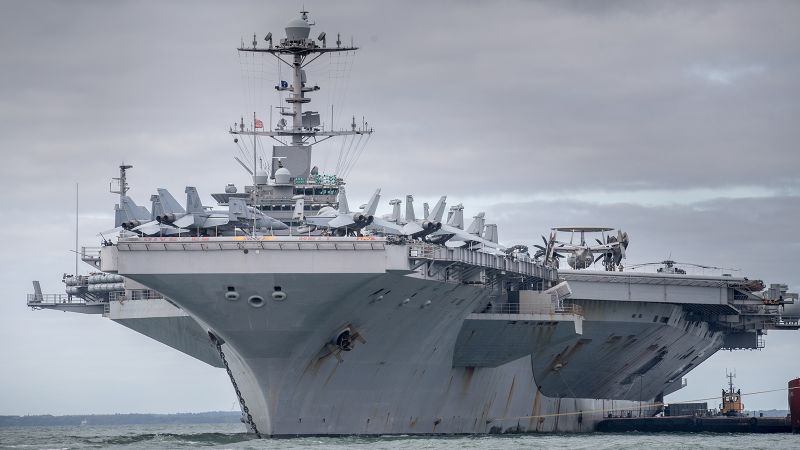
CNN
—
The USS Harry S. Truman, a nuclear-powered aircraft carrier, collided with a merchant ship in the Mediterranean Sea near Egypt on Wednesday night, according to a Navy spokesperson who provided an update on Thursday.
While the cause of the incident involving the US Navy ship and the Panamanian-flagged bulk carrier Besiktas-M remains under investigation, the spokesperson clarified that there was no flooding aboard the Truman, and its nuclear engines remained operational.
Fortunately, there were no injuries reported on either vessel, although damage was noted on the merchant ship, an official from the Navy stated.
An investigation is currently underway to ascertain the specifics of how the collision occurred. The Navy official pointed out that the area near the Suez Canal is usually very congested with maritime traffic.
The Besiktas-M, measuring 617 feet (188 meters) in length, had just left the Suez Canal and was heading towards Romania, as per data from the tracking site Marine Traffic.
The Truman, which spans 1,100 feet long and belongs to the Nimitz class of aircraft carriers, was reportedly on a course towards the canal, according to tracking information.
Marine expert Sal Mercogliano, a professor at Campbell University, commented in an X Spaces discussion that the region where the crash took place, off the anchorage near Egypt’s Port Said, had approximately 100 vessels present at the time.
Former US Navy captain Carl Schuster, now an instructor at Hawaii Pacific University, highlighted that such conditions offer minimal room for nautical maneuvers.
“In these constrained waterways, both ships typically need about one nautical mile to safely come to a stop,” Schuster explained.
Schuster further elaborated that even minor navigation errors, misinterpretation of the other vessel’s actions, or delays in decision-making could quickly escalate the situation, leaving very few viable escape options.
Recently, the Truman was in Souda Bay, Greece, for a scheduled port visit after completing two months of combat operations in the Central Command region. During this period, the carrier participated in multiple strikes against Houthi insurgents in Yemen and conducted airstrikes targeting ISIS in Somalia, as reported by the Navy.
The Truman is one of the eleven aircraft carriers currently active in the US Navy fleet.
Collisions between large naval vessels and commercial ships are uncommon, as aircraft carriers typically operate within a protective escort of destroyers.
Nevertheless, vessels entering the Suez Canal must travel in single file, which can increase the risk of collisions, as noted by maritime experts.
The last recorded incident involving a US aircraft carrier and a commercial vessel occurred on July 22, 2004, when a dhow collided with the former USS John F. Kennedy in the Persian Gulf, as per reports from maritime outlet USNI News.
In 2017, two US Navy destroyers were involved in tragic collisions. The USS Fitzgerald crashed into a cargo vessel off Japan, resulting in the deaths of seven sailors in June, while the USS John S. McCain collided with a tanker near Singapore and Malaysia two months later, killing ten sailors.









